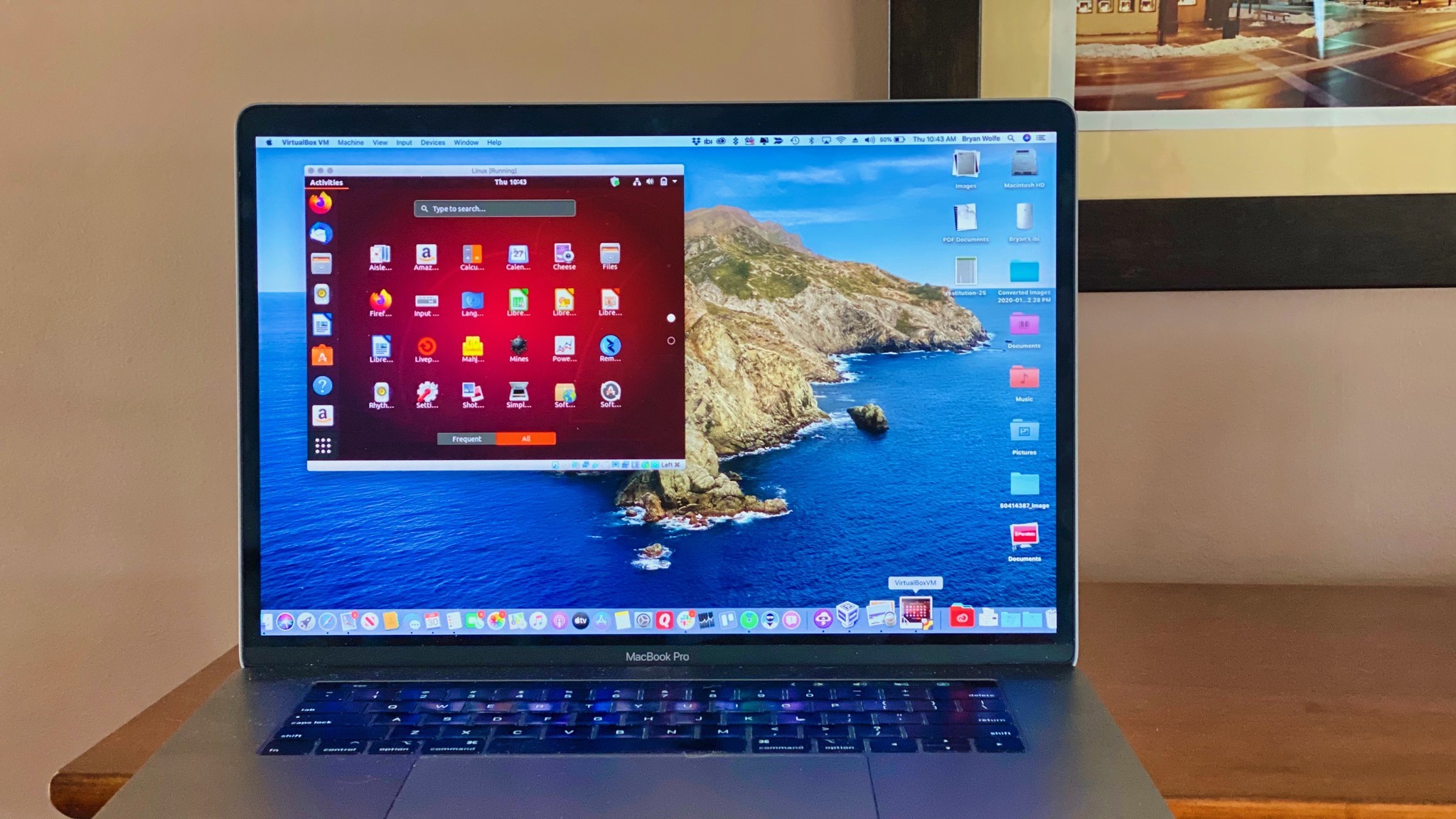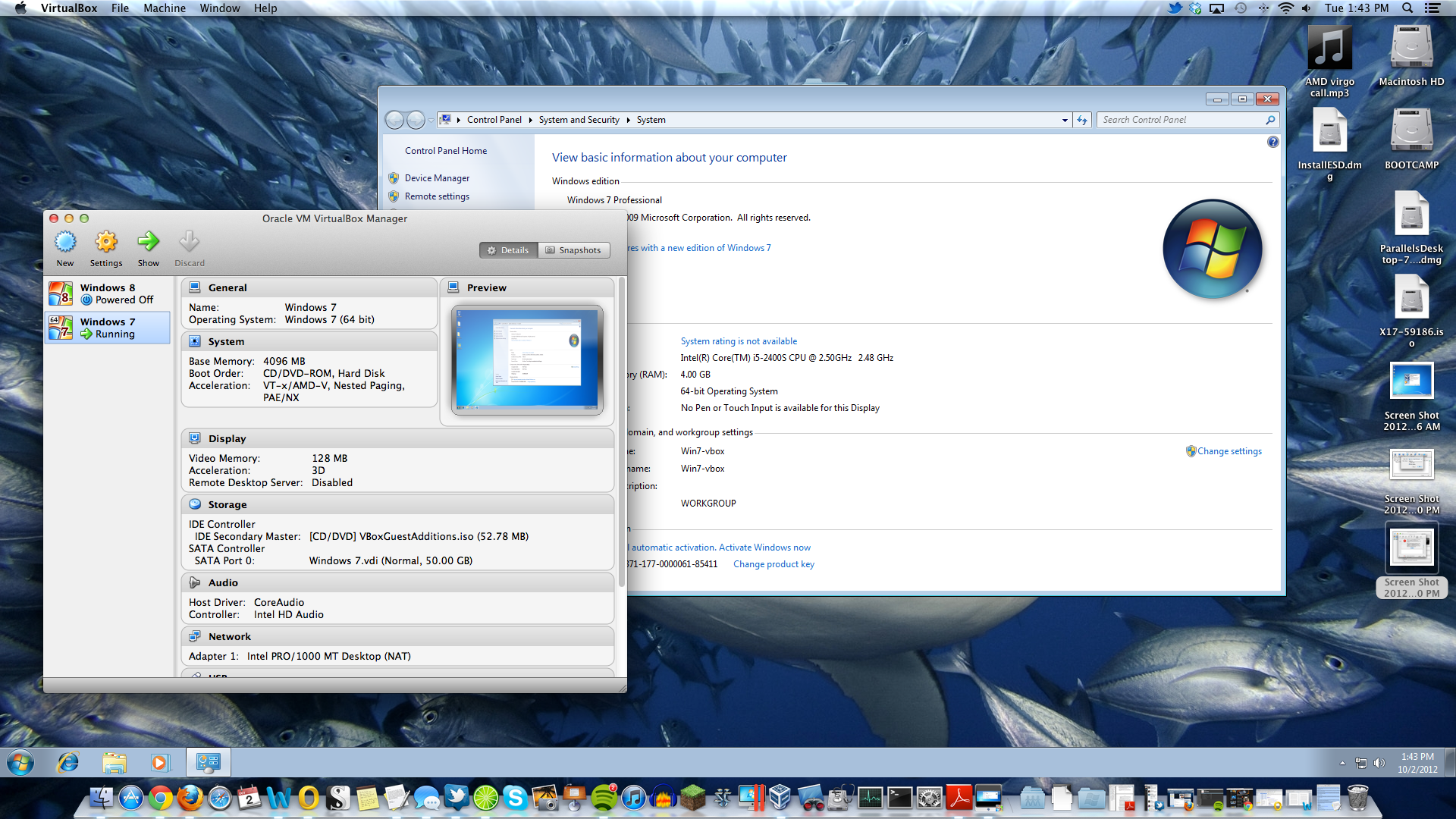
- PARALLELS OR VIRTUALBOX FOR MAC FOR MAC
- PARALLELS OR VIRTUALBOX FOR MAC MAC OS
- PARALLELS OR VIRTUALBOX FOR MAC INSTALL
- PARALLELS OR VIRTUALBOX FOR MAC PRO
Downside – only a fraction of the massive library of Windows applications is supported.
PARALLELS OR VIRTUALBOX FOR MAC INSTALL
Benefit – users can run (some) Windows applications directly on their Mac without the added hard drive space needed to install Windows or time lost waiting for Windows to boot up.

PARALLELS OR VIRTUALBOX FOR MAC MAC OS
Downside – it only supports Windows (at least directly) and when booted to Windows, users have no access to their Mac.Īnother method – open source project WINE (also available as the commercial project CoveWeavers CrossOver) installs a set of library files that allow users to run (some) Windows applications on Unix-style operating systems (including Mac OS X) without installing or booting to Windows.

Benefit – maximum performance for each operating system since, when running, it has direct access to all the system memory and other hardware resources.
PARALLELS OR VIRTUALBOX FOR MAC FOR MAC
Apple’s Boot Camp provides the tools for Mac users to partition their hard drives, install a recent version of Windows, and have their Mac boot to their choice of Mac OS X or Windows. In doing that, they made it possible for Macs to also run other PC-style operating systems directly, instead of in the slow translation of emulation software. In 2006, Apple started making Macs built-around PC-standard Intel processors in place of the PowerPC family of processors it had been using. (Try reading a book in a foreign language that you don’t understand by looking up every word in a dictionary to get an idea what it was like). This worked, letting them run Windows or other PC operating systems – very slowly. Others ran emulation software such as Virtual PC, letting them translate instructions intended for PC operating systems into instructions that could be performed by their Mac’s processor. One result of that was that there was a deep gulf between the Mac operating system and PC operating systems like MS-DOS and Windows.Ī few Mac users purchased hardware add-ons that essentially put a PC-style processor inside their Mac alongside the original processor, letting them switch between operating systems. It seems like a neat thing to be able to do.Ī bit of back-story: From their 1984 beginnings until 2006, Apple’s Macintosh computers ran on a different family of processors than the sorts of PCs that the majority of the business and home market was using. Good for trying pre-release preview OS versions, perhaps. It may even be useful for some to install a virtualized copy of Mac OS X on their Mac, allowing them to test software or settings without affecting their “real” Mac installation. Gamers may want to play games that haven’t been released for the Mac – and maybe never will be. Web developers and designers may need to see how their pages look in multiple browsers on multiple platforms. (Bookkeeping, perhaps?) Software developers may need to compile and then test code to work on multiple platforms.

Reasons can include a need for a specific piece of software that doesn’t have a Mac-equivalent or has a Mac-equivalent that isn’t file-compatible with the software colleagues or clients are using. For many, they chose to be a Mac-user because they don’t want to have to have anything to do with other operating systems. Not every Mac-user needs or wants the ability to run other operating systems.
PARALLELS OR VIRTUALBOX FOR MAC PRO
There are three competitors in the Mac emulation market – Parallels Desktop (US$79 or as an annual $99 subscription Pro version), VMware Fusion (also US$79), and Oracle’s (free and open source) VirtualBox. Time for another look at virtualization software, letting Macintosh users run PC operating system such as Windows or Ubuntu on their Macs.


 0 kommentar(er)
0 kommentar(er)
